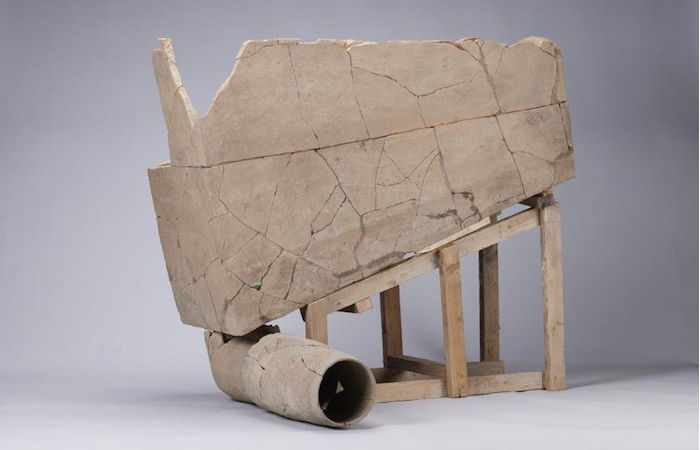Jan Bartek – AncientPages.com – The saying “there is nothing new under the Sun” seems appropriate when we learn that sanitary hardware was invented long ago.
Scientists have unearthed fragments of a 2,400-year-old flush toilet and a bent flush pipe among the ruins of a palace in the Yueyang archaeological site in the central city of Xi’an. The discovery was made when researchers analyzed soil samples attempting to learn what ancient people ate.

Broken parts of the toilet, including a bent pipe, were unearthed from the Yueyang archaeological site in Xi’an, Shaanxi province. Credit: China Daily
Yueyang was the capital of the Qin Kingdom for about 35 years and also the first capital city of the Han Dynasty, during which palaces were demolished to make way for farmlands.
“The toilet is believed to have been used by Qin Xiaogong (381-338 BC) or his father Qin Xian’gong (424-362 BC) of the Qin Kingdom during the Warring States Period (475-221 BC), or by Liu Bang, the first emperor of the Han Dynasty (206 BC-AD 220). The palace was possibly used for administrative affairs,” Global China Daily reports.
Researchers say the toilet was a “luxury object” inside the palace, with a pipe leading to an outdoor pit. We cannot know with certainty, but most likely, “servants probably poured water into the toilet every time it was used.” Whether its users sat on it or squatted over it, is also a matter of speculation, but “based on previous records about toilets, such as stone carvings on the tombs of royal members during the Western Han Dynasty (206 BC-AD 24), they likely squatted over it.”
“It is the first and only flush toilet to be ever unearthed in China. Everybody at the site was surprised, and then we all burst into laughter,” Liu Rui, a researcher at the Insтιтute of Archaeology at the Chinese Academy of Social Sciences, who was part of the excavation team at Yueyang said.
The flush toilet is concrete proof of the importance the ancient Chinese attached to sanitation,” Liu said, adding that there were few records of indoor toilets in ancient times.
See also: More Archaeology News
Before the newly announced discovery, the invention of the first flush toilet was widely credited to English courtier John Harington, who supposedly installed one for Queen Elizabeth in the 16th century. However, 4,000-year-old drainage systems that might have been connected with toilets have been found in northwest India.
Scientists say the partially restored toilet is now a key to further archaeological research on Yueyang.
Written by Jan Bartek – AncientPages.com Staff Writer





